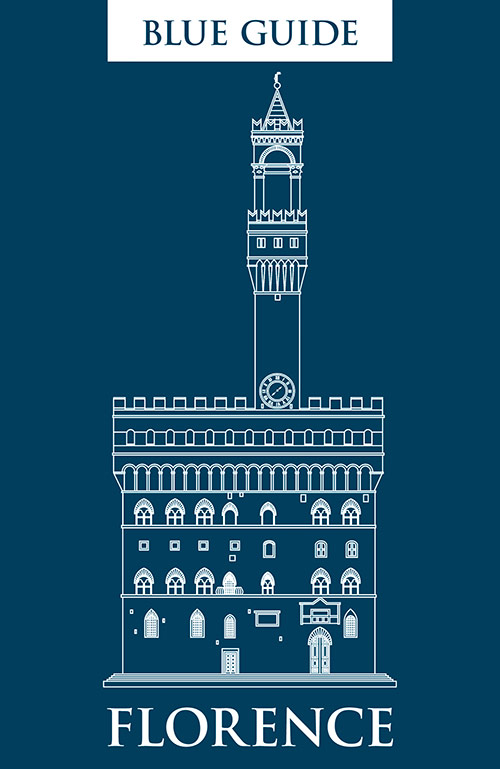
Covers the full range of what this extraordinary city, cradle of the Renaissance, has to offer.
View the book’s contents, index and some sample pages, and buy securely from blueguides.com here »

Covers the full range of what this extraordinary city, cradle of the Renaissance, has to offer.
View the book’s contents, index and some sample pages, and buy securely from blueguides.com here »
Comments are closed.
| Cookie | Duration | Description |
|---|---|---|
| cookielawinfo-checbox-analytics | 11 months | This cookie is set by GDPR Cookie Consent plugin. The cookie is used to store the user consent for the cookies in the category "Analytics". |
| cookielawinfo-checbox-functional | 11 months | The cookie is set by GDPR cookie consent to record the user consent for the cookies in the category "Functional". |
| cookielawinfo-checbox-others | 11 months | This cookie is set by GDPR Cookie Consent plugin. The cookie is used to store the user consent for the cookies in the category "Other. |
| cookielawinfo-checkbox-necessary | 11 months | This cookie is set by GDPR Cookie Consent plugin. The cookies is used to store the user consent for the cookies in the category "Necessary". |
| cookielawinfo-checkbox-performance | 11 months | This cookie is set by GDPR Cookie Consent plugin. The cookie is used to store the user consent for the cookies in the category "Performance". |
| viewed_cookie_policy | 11 months | The cookie is set by the GDPR Cookie Consent plugin and is used to store whether or not user has consented to the use of cookies. It does not store any personal data. |
Fully on Florence and More [Amazon review]
As always, the Blue Guide on Florence holds up to the series’ high standards. The guide begins with a historical sketch including an in depth history of the Renaissance. Unsure of who is whom in the Medici family? This Florence Blue Guide provides a complete family tree! There are maps, diagrams, photos, a glossary and detailed index as well as suggestions for lodging and dining. Much welcome information is provided on each famous sight including special tips on ticket purchases. For example, there is both a telephone number and OFFICIAL on-line booking service for the Uffizi Gallery. The guide warns that other booking services should be avoided due to their extra fees. That sure is a helpful tip!
Habsburg and Risorgimento Florence
I’ve just returned from my first visit to Florence, and want first to say that your guide to the city contributed hugely to making it thoroughly enjoyable. Without the guide, I would have missed countless places and small details (and a good restaurant). You invite comments on your guide, and I do have one suggestion for how the guide could be made more useful and informative. It will take a paragraph or two to explain: Much of the city centre that visitors see looks like it was built between around 1780 and 1910 (I’m guessing a bit re dates here). Most of it is undistinguished, at least by the standards of medieval and renaissance Florence, though it is harmonious enough and provides an agreeable backdrop for the significant older buildings and monuments. Obviously, all this building was on sites on which former buildings had decayed or been deliberately demolished. I think that the context in which all this redevelopment took place deserves more attention than the various passing references given in the guide. After all, there was clearly the money to do it. What were the driving forces? For example, Florence was the capital of Italy from 1865 to 1871, with parliament meeting in the Palazzo Vecchio. So think of all the parliamentarians and bureaucrats who must have been around – I can’t believe they didn’t have any impact, or some sort of vision for what they wanted of Florence. Moreover, much of this redevelopment became controversial. One only has the think of Herbert Horne’s own efforts, and his involvement with the group of foreigners who campaigned from around 1890 for preservation of old buildings that were in areas that the city council wanted to redevelop. I guess too there has been much restoration after the damage incurred in 1943-44. I think all this deserves to be discussed in a short essay, or as an amplification of the Historical Sketch. I think this would give readers a better understanding of the physical fabric of the city that we see today, and the forces that led to this. I trust this is helpful.
Excellent and deep review [Amazon review]
In the tradition of the Blue Guides, a superb compendium that provides a definitive guide to this magical city. Fully versed in Florence’s history, the logistics of touring and Italian culture. Excellent and deep review which will serve well any traveler.
These are great guides [Amazon review]
im already a fan of the blue guide rome which has been a great source of knowledge for me during 2 trips to rome, i now have the florence guide and its equally superb, i love the way everything is described, the language is very thorough, these are very, very well written guides, theyre not big on glossy pictures but have a great deal of substance, much more than other guides, they do contain great floor plans of important churches etc, also they have maps of the cities within, a pleasing touch is diagrams and illustrations of famous buildings,, these are top quality guides and will always be my first port of call whenever i want to look something up